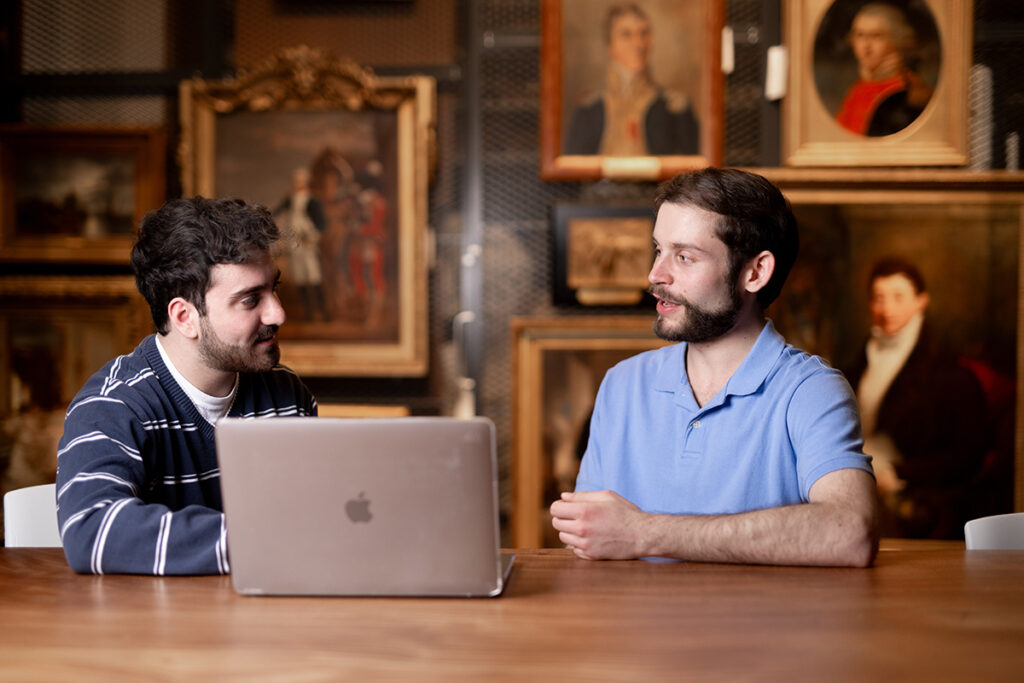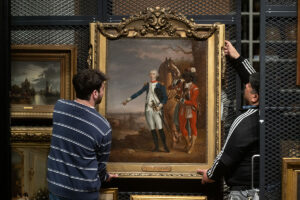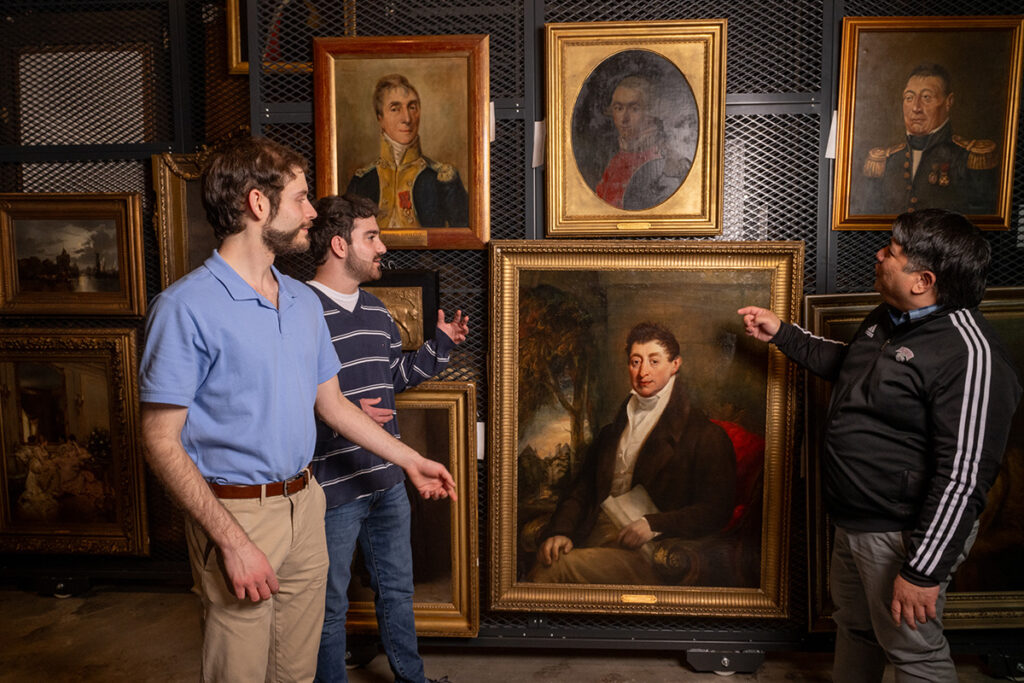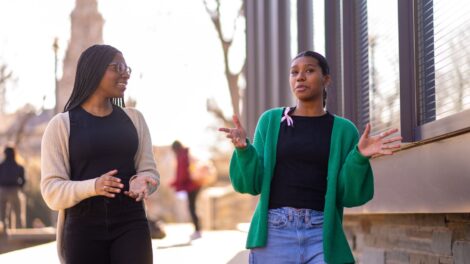Ahead of Lafayette College’s Bicentennial and United States’ Semiquincentennial, students’ research takes closer look at artistic depictions of Marquis de Lafayette
By Kristen Vincent ’26
In 2026, Lafayette and the United States of America will have anniversaries: the College—its Bicentennial, and the nation—its 250th birthday.
To commemorate these momentous occasions, the College has been planning events around its Bicentennial, and Lehigh Valley 250—a group comprised of many Lehigh Valley arts, culture, education, and history organizations—is coordinating a series of exhibitions and events through 2028.
Christopher Byrnes ’26, who is majoring in government and law and Asian studies with a minor in data science, and history major Peter Godziela ’25 spent last summer researching the stories behind works of art of the Marquis de Lafayette. Byrnes’ research was for an exhibition titled The Spy Who Brought Surrender, slated to be displayed during fall 2026. Godziela’s research is still underway for an exhibition called Facing Lafayette, slated to be displayed in fall 2025.

Rico Reyes, director of Lafayette art galleries—who oversees this research—shares that the trio analyzed more than 90 artworks featuring the Marquis de Lafayette.
“We looked at these pieces and wondered: How is Marquis de Lafayette’s life story told through these paintings? What is included, and what is left out?” Reyes shares. “Usually when people talk about Marquis de Lafayette, we talk about his time during the American Revolution and his return in 1824—but there’s a lot of periods before and after those times. We want to make sure that we fill in those gaps. That’s the story we hope to expand on.”
 One piece of art examined by Byrnes was Lafayette at Yorktown (c. 1783) by Jean-Baptiste LePaon. The painting depicts the Marquis de Lafayette and an African American man wearing a military uniform by his side. General knowledge attributes this person as James Armistead Lafayette, however, research shows the attribution may be unreliable.
One piece of art examined by Byrnes was Lafayette at Yorktown (c. 1783) by Jean-Baptiste LePaon. The painting depicts the Marquis de Lafayette and an African American man wearing a military uniform by his side. General knowledge attributes this person as James Armistead Lafayette, however, research shows the attribution may be unreliable.
“With this painting, in particular, we are trying to answer: Who is this man featured beside the Marquis de Lafayette? How did French artists hear about these experiences?” Byrnes says.“Our research shows that this man could be a composite character of African Americans who were at the siege of Yorktown, specifically during a battle called Redoubt 10.”
“We’re looking into who this character symbolizes as opposed to the painting depicting one single person,” adds Reyes.
Godziela’s research focused on putting together what the Marquis’ life was like through the pieces in the collection.
“There are so many different works of art that depict the Marquis de Lafayette,” shares Godziela, who is also a Bergh Family Fellow. “So when it comes down to these works of art, what are their different characteristics and what stories do they tell? That’s what I was aiming to explore and discover.”
Godziela’s research also noted that a lot of art featuring the Marquis de Lafayette originated in the 19th century.

“It is interesting that there was a strong interest in history and the historical figures of the American Revolution during the 19th century. During this time, people reflecting on the American Revolution were excited to celebrate that history through works of art,” he says.
Maurice Luker, executive director of corporate, foundation, and government relations, appreciates the bridge between Byrnes’ and Godziela’s research and Lehigh Valley 250, and hopes that exhibitions surrounding artifacts and artwork about the birth of the United States can be appreciated by the public.
“These exhibitions share a variety of stories through the eyes of ordinary people, about the peoples and institutions of our broader community, and their participation in the origin and the founding of the country,” Luker says. Luker serves on both Lehigh Valley 250 and the Northampton County America 250 Pennsylvania committee.
Byrnes and Godziela spoke about their research recently at the Keefe Colloquium in the Public Humanities, held at Lafayette on March 23. The colloquium featured scholars and curators from across the United States who shared their research and compelling stories about the people who have made pivotal contributions in the Lehigh Valley and in the early growth of our nation.
“Both Byrnes’ and Godziela’s presentations were so eloquently executed that one attendee commented it was difficult to tell the difference between the students and the scholars,” Luker says.

 One piece of art examined by Byrnes was
One piece of art examined by Byrnes was 

